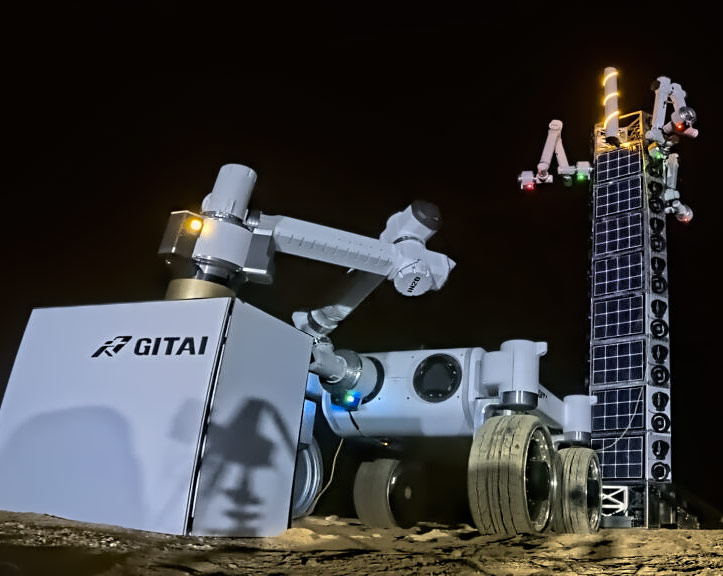
The high-definition video below seems like a prototype animation of conceptual robots. However, it’s real and was filmed in the desert using ‘Inchworm’ robots. The Inchworms built a cell tower, with the sections marshaled in a staging area typical of a real-life tower erection plan. The Inchworms also lifted the broadcast antenna and then showed how to remove the tower for another location or maintenance.
GITAI USA Inc. (GITAI), the space robotics trailblazer, unveiled a game-changing giant leap for moon construction automated tower erectors. They’ve pulled off a stellar first by showcasing their robot squad building a 16.5-foot-tall cell tower, mimicking moon-like conditions. This feat was a team effort with KDDI Corporation, a telecom giant from Japan, cheering from the sidelines. (SEE VIDEO BELOW)
Here’s the scoop: GITAI relied solely on its high-tech capabilities for this demo, rolling out a Lunar Rover and three ‘Inchworm’ robots. These mechanical marvels come equipped with “grapple end-effectors” for hands, making them versatile builders in space.
The highlight reel of this space-age construction project shows the robots doing three significant tasks on their own assisted by ground crew supervisors:
- On a desert stand-in for the moon, the robots assembled a 16.5-foot cell tower.
- They then hoisted a communication antenna to the top, hooked up the power, and lit it up.
- For their final achievement, they played reverse-engineer, taking the antenna down and dismantling the tower, mimicking regular maintenance work in a future lunar city.
KDDI used the blueprints and know-how from its Earth-based mobile stations, while GITAI tuned the antenna for robotic assembly lines.
Diving into GITAI’s toolbox, the Inchworm and Rover Robots are pegged as their go-to gear for space construction. These bots are designed to work under Earth’s gravity, allowing for thorough test drives before their space debut. Their design caught the eye of DARPA, earning them a spot in a 10-year study on lunar infrastructure.
This demo was more than just showing off—it confirmed that GITAI’s robots could handle the heavy lifting for moon base building, from telecom towers to launch pads and beyond.
















